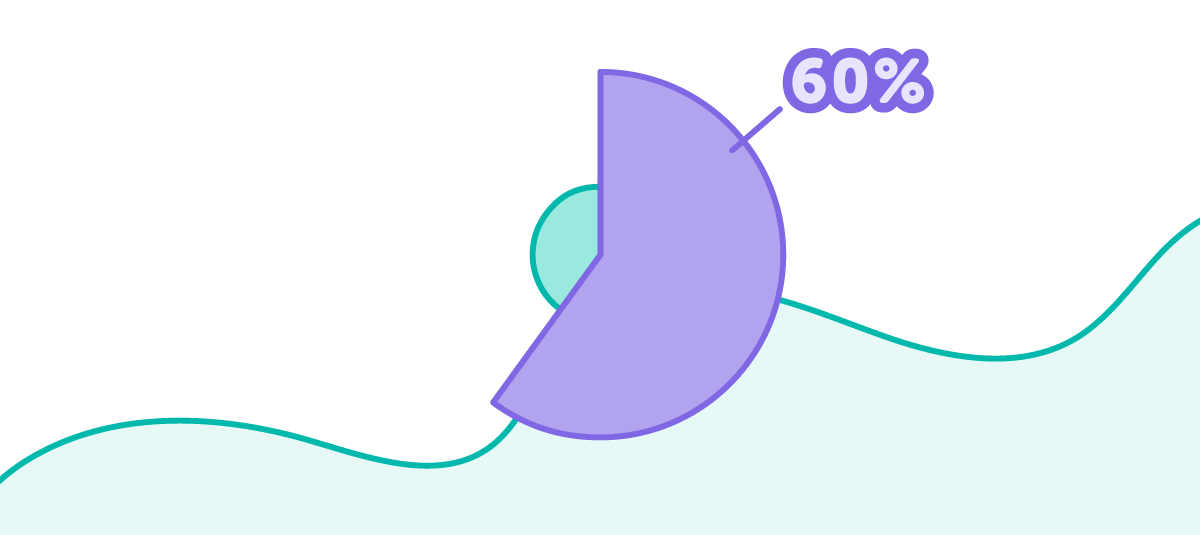4 Tips to Increase Fundraising Conversion Rates

Request a Demo
Learn how top nonprofits use Classy to power their fundraising.
In The State of Modern Philanthropy: Deconstructing the Online Donor Journey, our team examined how the amount of time someone spends a Classy campaign page impacts fundraising conversion rates. This includes time spent on landing pages, engaging with media, or completipeer-to-peer campaignng the checkout process.
On Classy donation pages, specifically, 60% of people who check out do so in less than one minute. However, when analyzing time spent across all Classy campaign types—including donation pages, peer-to-peer, crowdfunding, and events—we find that fundraising conversion rates peak within the 4 to 5-minute window.
While your nonprofit should test what works with your specific community and its behavior, this data points you in the right direction to drive higher conversions on your pages. It shows that you must capture someone’s attention as soon as they land on your page, either to immediately convert or keep learning more to eventually convert.
Your nonprofit needs to strike the perfect balance of engaging content that will hook in your visitors and increase their likelihood of checking out. Below, we supply some tips and best practices that can help your nonprofit engage visitors, disseminate important information, and inspire action.
Download The State of Modern Philanthropy for Free
Defining Conversion
Before we dig into the best practices, it’s important to understand the different ways a prospective supporter can convert, especially across different campaign types, and which action your nonprofit wants to encourage.
Donate
To donate is to contribute with either a one-time or recurring donation. This the primary call to action on crowdfunding platforms and donation pages.
Fundraise
Supporters can sign up to fundraise on your nonprofit’s behalf by creating a personal fundraising page. If you’re running a peer-to-peer fundraising platform or registration with fundraising event, this is your primary call to action.
Purchase a Ticket
A ticketed event, either in-person or virtual, will have a call to action that asks supporters to purchase a ticket in order to attend.
Discover Which Classy Campaign Type Is Perfect for You
Tips to Increase Your Fundraising Conversion Rates
Armed with an understanding of different ways to convert across Classy campaign types, your organization can begin building and optimizing your campaign for higher conversion rates. Below, we walk through steps you can take to enhance your campaign and strengthen your efforts.
1. Balance Your Content
Encouraging someone to spend enough time on your page to buy into your cause and convert, while absorbing the right amount of information about your nonprofit, is a balancing act. Further, the amount of content can also depend on the campaign type.
For example, if you’re sending people directly to a donation page, they likely already intend to make a donation. You want this process to be as streamlined and quick as possible for them, so they follow through with their gift.
It doesn’t make sense to overload them with information about your mission or cause on the checkout form. After all, 60% of people check out on Classy donation pages in under one minute, according to The State of Modern Philanthropy 2020.
Don’t include paragraphs of text, links out to other pages, and excessive custom questions on your checkout form. If you add in unnecessary information, you run the risk of distracting or interrupting the checkout process for potential donors and may lose crucial fundraising revenue.
With the other campaign types—crowdfunding campaign, peer-to-peer campaign, ticketed event, or registration with fundraising events—people are going to inherently need more information in order to convert. Unlike with a donation page, they may not know for certain if, and how, they want to support your organization.
In that light, these landing pages need to disseminate important information while also answering potential questions someone might have, such as:
- Details about your mission
- How the campaign funds your work and programs
- The impact of a donation
- Incentives for fundraising activity
- If you’re a legitimate, trusted nonprofit
- Why someone should fundraise on your behalf
- How they can build a personal fundraising page
- Why they should attend your event
You need to anticipate the questions and gaps in knowledge someone might have when arriving on your campaign page, and provide that information in an easily digestible way.
2. Use Video
A well-made video can dole out large amounts of information in a short amount of time, showcase the impact your supporters make on the ground, or give new life to your organization’s imagery.
If you find your page is packed with long-winded walls of text, try to reimagine your copy as a video. Further, think about what common questions or knowledge gaps you can quickly cover with the help of a video.
As a general rule of thumb, you’ll want to keep your videos short and powerful. Aim for not much longer than 90 to 120 seconds.
More than anything, your video needs to be targeted. If that means you create a five-minute video directly related to your campaign that supplies worthwhile information, try it out and track your engagement metrics to see whether people are watching it all the way through. If it’s an old video about your brand unrelated to the campaign, skip it. Stop and examine what helps your call to action the most.
3. Create Clear Calls to Action
Make sure your language for your call to action is clear. If you want someone to donate, ask them to donate; don’t get overly creative or flowery with the copy. This makes it confusing for your supporters to know what action, specifically, you want them to take. That, in turn, introduces a chance that they abandon your page entirely because they don’t know what to do.
Additionally, including too many different CTAs can add more potential questions to the list they already have—questions your page is supposed to answer. A combination of CTAs to donate, make a monthly donation, and fundraise on your behalf can end up stalling their action. All of this increases the amount of time a potential donor spends on your page, but it’s not productive time spent.
Instead of learning about your mission and the impact they can make on your work, they run around in circles attempting to figure out what to do. Keep your asks simple, straightforward, and direct.
In fact, you can use the three conversion buckets above as a starting point for strong CTAs: “Donate,” “Fundraise,” and “Purchase Ticket.” If you have a specialized campaign, like a dedicated monthly giving program, you’ll likely want to create a CTA that’s a bit more specific, like “Donate Monthly.”
While our data analysis shows that conversion rates peak within the 4 to 5-minute window across campaigns, that doesn’t mean people won’t convert before then. Create a strong, direct CTA that can help push someone to convert sooner rather than later.
4. Perform User-Testing
At Classy, when we have new feature updates or product launches, our team asks external individuals to participate in user-testing. This allows us to gauge the effectiveness of any changes or new releases before the full launch to the public.
Carry that same testing mindset into your own nonprofit as it relates to conversion rates on your campaign pages. After you build a new page or re-optimize an old page, reach out to your network and source individuals who would be available to test the page.
Aim to secure between 3 to 5 people and set up a time where you can observe them as they engage with your page. Pay attention to:
- What they click on
- If they’re clicking what you need them to click
- Where they spend their time
- What they miss
- Which media they engage with most
- Any areas of confusion
- Any areas of fixation
As you go, ask them to provide verbal feedback about their experience with the page. Don’t prompt them with leading questions; let them supply organic reactions. All the while take diligent notes about their behavior on the page.
Once you have your feedback, update your page accordingly and prepare to launch it to the public. Think of this as a sort of soft launch to build confidence that your page is ready to drive conversions.
There’s no guarantee that people who don’t go through your donation checkout flow in over a minute won’t complete it. Additionally, if someone spends 4 to 5-minutes on your campaign page, it’s no sure bet they’ll convert.
However, you can use the findings from our annual report, The State of Modern Philanthropy 2020, to ensure you’re optimizing your campaign pages for higher conversion rates. If you’re interested in learning more about time spent on page, and the wealth of other data points in the full report, download your copy for free right now.
Download The State of Modern Philanthropy for Free
Subscribe to the Classy Blog
Get the latest fundraising tips, trends, and ideas in your inbox.
Thank you for subscribing
You signed up for emails from Classy
Request a Demo
Learn how top nonprofits use Classy to power their fundraising.
 Explore Classy.org
Explore Classy.org 

